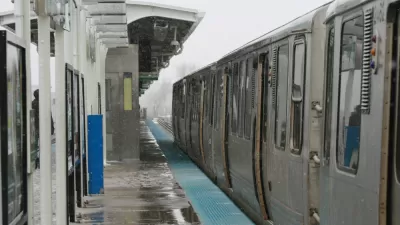There are several practical reasons people will soon be switching to plugin electrical vehicles. Judging from past examples, the shift in consumer preference will be swift and decisive, catching car manufacturers by surprise.

The everyday practical reasons to choose a plugin electric car over a gas powered car are already here. However, consumer demand for them have been underwhelming. Consumer awareness of electric vehicle advantages lags, believes San Diego land use attorney Bill Adams, using his own learning curve as an example. Much of the public is still under the impression that owning an electric vehicle is an exercise in paying more and getting less to save the climate. He predicts that consumer knowledge about the practical non-environmental advantages of purchasing an electric car will soon result in a swift and massive switch in consumer preference from gas to electric vehicles. Practical benefits include:
1) Convenience: Forget about gas stations—fuel up at home at night. Quick charging at charge stations for long trips is improving.
2) Fuel Cost: Charging up is cheaper than fueling up.
3) Reliability and maintenance cost: Fewer moving parts mean fewer repairs and less maintenance.
4) Performance: Electric vehicles have superior torque and no transmission gear change delays.
5) Tax credits and rebates: For new vehicle purchases, buyers get a $7,500 tax credit, and in California, a $2,500 rebate ($4,000 for people with income up to 3 x poverty level).
6) Infrastructure: Charging stations are relatively easy and cheap to build compared to gas stations.
7) Inevitability: The global conversion is inevitable, which itself will drive demand as consumers will not want to purchase new vehicles that will become obsolete.
For more details, see the source article.

Alabama: Trump Terminates Settlements for Black Communities Harmed By Raw Sewage
Trump deemed the landmark civil rights agreement “illegal DEI and environmental justice policy.”

Planetizen Federal Action Tracker
A weekly monitor of how Trump’s orders and actions are impacting planners and planning in America.

The 120 Year Old Tiny Home Villages That Sheltered San Francisco’s Earthquake Refugees
More than a century ago, San Francisco mobilized to house thousands of residents displaced by the 1906 earthquake. Could their strategy offer a model for the present?

In Both Crashes and Crime, Public Transportation is Far Safer than Driving
Contrary to popular assumptions, public transportation has far lower crash and crime rates than automobile travel. For safer communities, improve and encourage transit travel.

Report: Zoning Reforms Should Complement Nashville’s Ambitious Transit Plan
Without reform, restrictive zoning codes will limit the impact of the city’s planned transit expansion and could exclude some of the residents who depend on transit the most.

Judge Orders Release of Frozen IRA, IIJA Funding
The decision is a victory for environmental groups who charged that freezing funds for critical infrastructure and disaster response programs caused “real and irreparable harm” to communities.
Urban Design for Planners 1: Software Tools
This six-course series explores essential urban design concepts using open source software and equips planners with the tools they need to participate fully in the urban design process.
Planning for Universal Design
Learn the tools for implementing Universal Design in planning regulations.
Clanton & Associates, Inc.
Jessamine County Fiscal Court
Institute for Housing and Urban Development Studies (IHS)
City of Grandview
Harvard GSD Executive Education
Toledo-Lucas County Plan Commissions
Salt Lake City
NYU Wagner Graduate School of Public Service





























